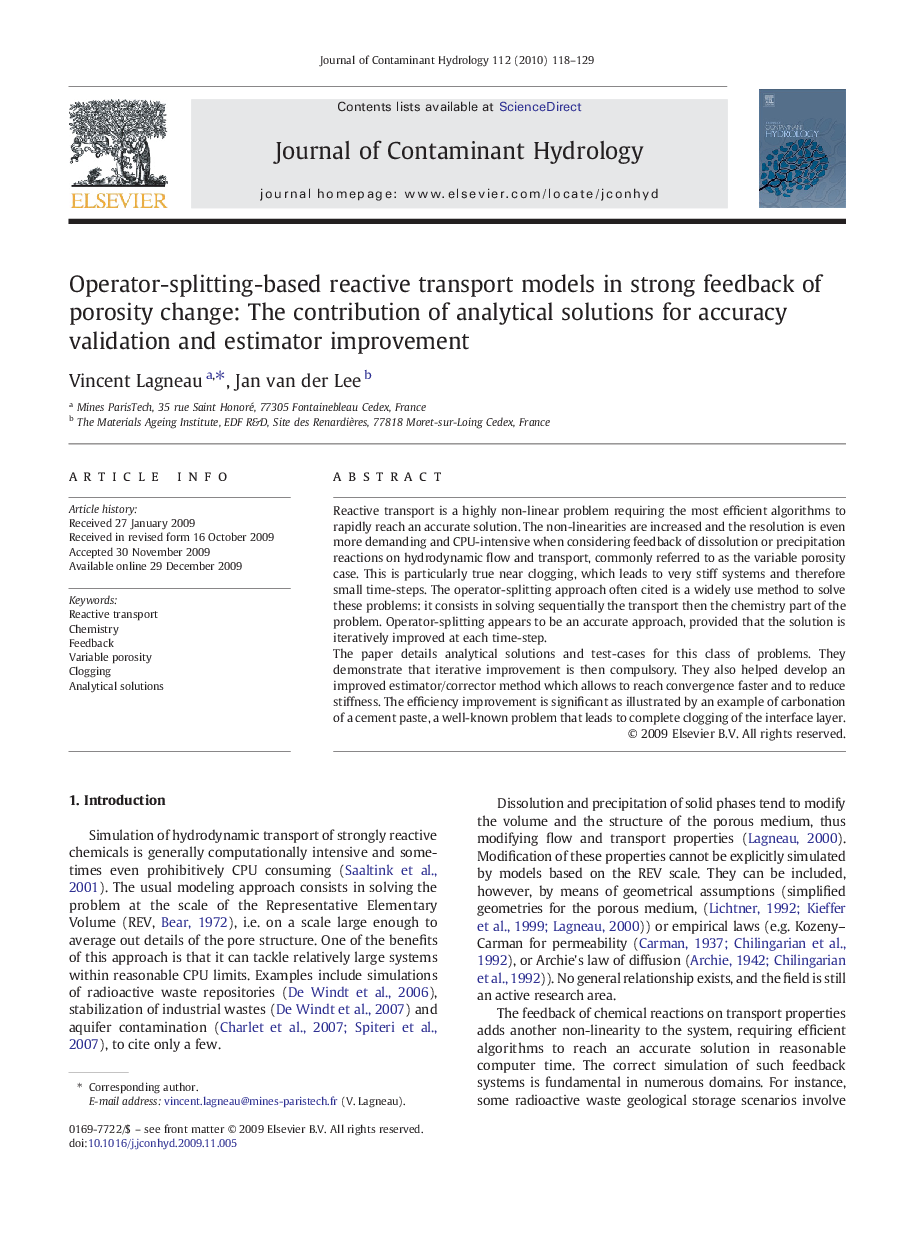| Article ID | Journal | Published Year | Pages | File Type |
|---|---|---|---|---|
| 4547106 | Journal of Contaminant Hydrology | 2010 | 12 Pages |
Reactive transport is a highly non-linear problem requiring the most efficient algorithms to rapidly reach an accurate solution. The non-linearities are increased and the resolution is even more demanding and CPU-intensive when considering feedback of dissolution or precipitation reactions on hydrodynamic flow and transport, commonly referred to as the variable porosity case. This is particularly true near clogging, which leads to very stiff systems and therefore small time-steps. The operator-splitting approach often cited is a widely use method to solve these problems: it consists in solving sequentially the transport then the chemistry part of the problem. Operator-splitting appears to be an accurate approach, provided that the solution is iteratively improved at each time-step.The paper details analytical solutions and test-cases for this class of problems. They demonstrate that iterative improvement is then compulsory. They also helped develop an improved estimator/corrector method which allows to reach convergence faster and to reduce stiffness. The efficiency improvement is significant as illustrated by an example of carbonation of a cement paste, a well-known problem that leads to complete clogging of the interface layer.
